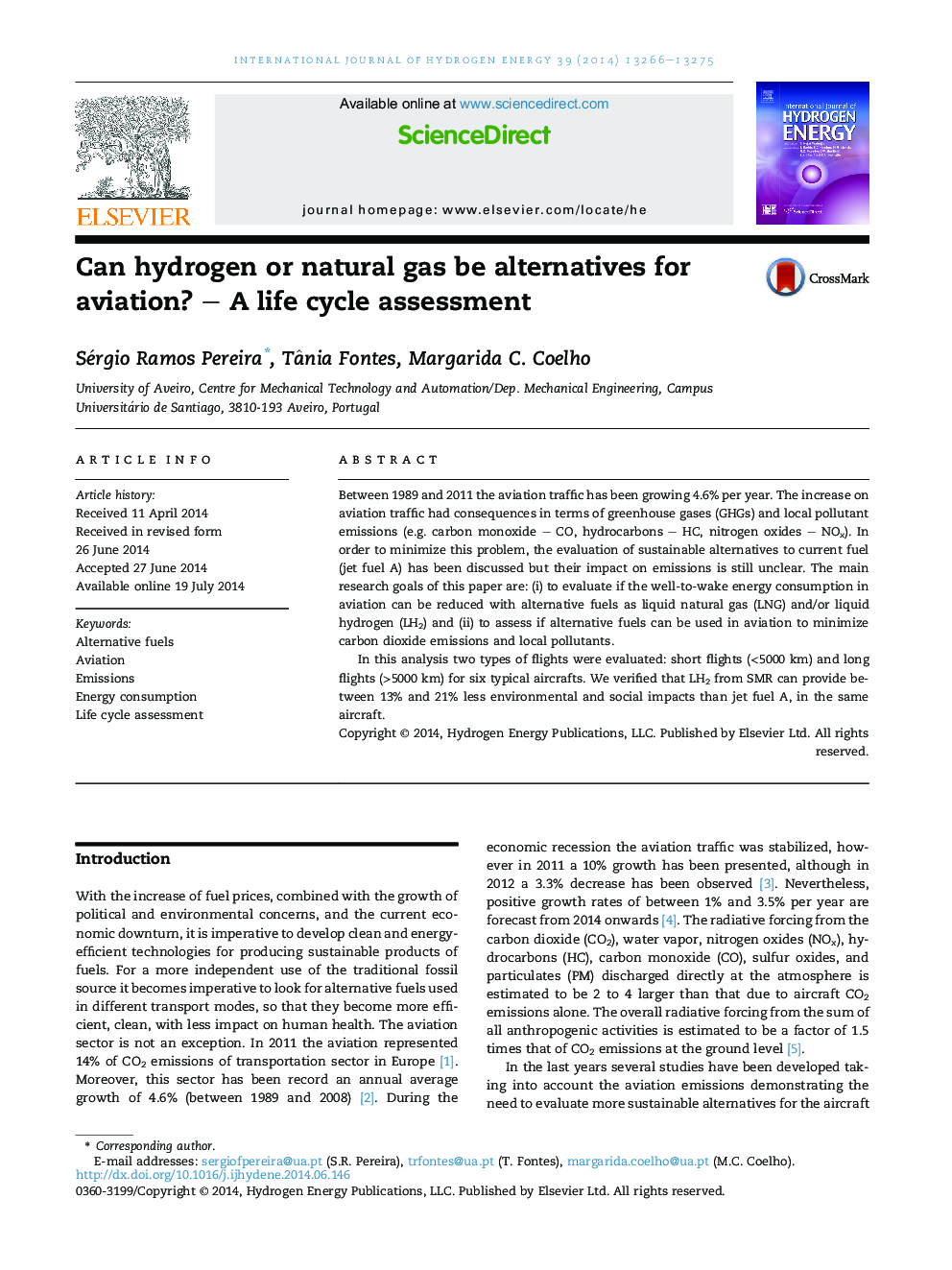| Article ID | Journal | Published Year | Pages | File Type |
|---|---|---|---|---|
| 1272614 | International Journal of Hydrogen Energy | 2014 | 10 Pages |
•We made a life cycle analysis of different fuels applied to aviation.•60 simulations were performed in order to obtain the energy consumption and emissions.•LH2 obtained by SMR present 21% more GHGs emissions than an LNG aircraft.•LH2 from SMR can provide 13–21% less environmental and social impacts than jet fuel.•LH2 from hydro energy shows 51–60% less environmental/social impacts than jet fuel.
Between 1989 and 2011 the aviation traffic has been growing 4.6% per year. The increase on aviation traffic had consequences in terms of greenhouse gases (GHGs) and local pollutant emissions (e.g. carbon monoxide – CO, hydrocarbons – HC, nitrogen oxides – NOx). In order to minimize this problem, the evaluation of sustainable alternatives to current fuel (jet fuel A) has been discussed but their impact on emissions is still unclear. The main research goals of this paper are: (i) to evaluate if the well-to-wake energy consumption in aviation can be reduced with alternative fuels as liquid natural gas (LNG) and/or liquid hydrogen (LH2) and (ii) to assess if alternative fuels can be used in aviation to minimize carbon dioxide emissions and local pollutants.In this analysis two types of flights were evaluated: short flights (<5000 km) and long flights (>5000 km) for six typical aircrafts. We verified that LH2 from SMR can provide between 13% and 21% less environmental and social impacts than jet fuel A, in the same aircraft.
